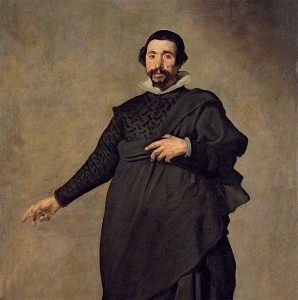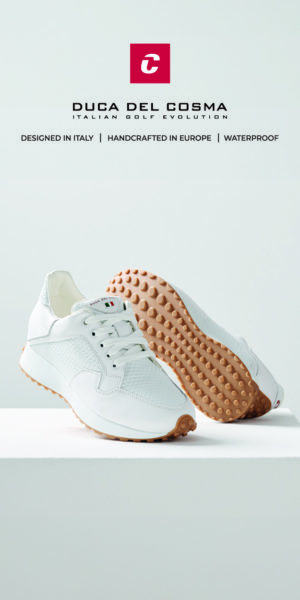Posted on March 10, 2015 in Agenda, Arts & culture.
VELÁZQUEZ - from 25 March 13 July 2015 at the Grand Palais
Born in Seville in 1599, Velázquez is one of the most important figures in the history of art, all styles and all times combined.

Diego Velázquez, Portrait of Pablo de Valladolid (detail), circa 1635, oil on canvas, 209 x 125 cm,
Madrid, Museo Nacional del Prado © Madrid, Museo Nacional del Prado
Leader of the Spanish school, official painter of King Philippe IV, at the time when Spain dominates the world, he is the strict contemporary of Van Dyck, Bernin and Zurbaran, although his art does not elevate him to a timelessness that only the names of Leonardo, Raphael, Michelangelo, Titian, Caravaggio and Rembrandt can dispute with him.
Trained very young in the studio of Francisco Pacheco, influential and literate painter of the Andalusian capital, he wasted no time in establishing himself and, encouraged by his master who had also become his stepfather, decided to try his luck at the Court of Madrid. After an unsuccessful first attempt, he was finally appointed painter to the king in 1623, marking the beginning of an artistic and social ascent which led him to the highest offices in the palace and closest to the sovereign.
His career was punctuated by two decisive trips to Italy, the first around 1630, the second around 1650, and by the successive births and deaths of heirs to the throne. Master in the art of portraiture, of which he liberates and renews the genre, he is no less excellent in landscape, history painting or, in his youth, the genre scene and still life.
Although he is one of the most famous and admired artists yesterday and today, no monographic exhibition in France has ever shown the genius of the man Manet has consecrated "painter of painters". The rarity of his paintings (barely more than a hundred) and their legitimate concentration in the Prado Museum (Madrid) make it particularly difficult to organize a complete retrospective. However, this is the challenge taken up by the Louvre Museum and the Grand Palais, which are joining forces in collaboration with the Kunsthistorishes Museum in Vienna and with the generous support of the Prado Museum. Certain quite exceptional loans have thus been obtained, such as the Forge of Vulcan (Prado) and the Tunic of Joseph (Escorial), as well as absolute masterpieces such as Venus in the mirror (London , National Gallery) or the Portrait of Innocent X (Rome, Palais Doria Pamphilj) - so dear to Francis Bacon -, two universal icons in the history of art.
The exhibition aims to present a complete panorama of the work of Diego Velázquez, from its beginnings in Seville to its final years and the influence that its art exerts on its contemporaries. Its mission is also to raise the main questions and discoveries that have occurred in recent years, exhibiting, in some cases for the first time, recently discovered works (L'Education de la Vierge [New Haven, Yale Art Gallery]; Portrait from the inquisitor Sebastian de Huerta [private collection]).
A first section sets out to evoke the artistic climate of Andalusia at the beginning of the XNUMXth century, putting into perspective the first works of Velázquez and restoring the emulation of Pacheco's workshop around paintings and sculptures by Alonso Cano and Juan Martinez Montañés.
Then comes the time to tackle the naturalistic and picaresque vein of Velázquez's painting around his cooking and tavern scenes, with particular emphasis on the concepts of variation and variation of patterns.
Around 1620, the painter's style evolved towards a more frank caravagism. This period corresponds to the artist's first contacts with Madrid and the painting found there and produced there. This part of the exhibition, ensuring the transition between the years of training in Seville and the first Madrid era, thus presents the painter's works among those of his contemporaries, Spanish or Italian, who shared this commitment to a more "modern" painting . Finally, the beginnings of the painter at court saw his conception of the portrait evolve, passing from bubbling naturalism to colder and solemn formulas in keeping with the tradition of the Spanish court portrait.
An important turning point in his art as in his career, the artist's first trip to Italy is illustrated by works that could have been executed in Rome or immediately upon his return (View of the gardens of the Villa Medici, Rixe in front of an inn… ). These masterpieces of the first maturity also offer the opportunity to approach a little explored aspect of his work: the landscape. Stimulated by the example of Rubens, Velázquez gives freshness and freedom to the backgrounds of his outdoor portraits made for the various royal residences.
The central part of this second section is devoted to the figure of Baltasar Carlos. Cherished son and heirs expected from the Crown, he embodies all the dynastic hopes of the Habsburgs of Spain at the time when the reign of Philip IV is itself at its peak. Halfway through, the exhibition stops at the mythological, sacred and profane painting of Velázquez, of which the Venus in the mirror will be the highlight.
The third and last part is dedicated to the painter's last decade and his influence on those known as the Velazquez (velazqueños).
This section largely devotes the importance of the painter as a portrait painter, to the Court of Madrid at first, then to Rome around Pope Innocent X on the occasion of his second Italian trip. On this occasion will be mentioned two of his important collaborators and remained in the shadow of the master: the Italian Pietro Martire Neri and Juan de Pareja, freed slave and assistant to the painter.
Finally, it is a question of presenting the last royal portraits executed by the Spanish master, compared to those of his son-in-law and more faithful disciple: Juan Bautista Martinez del Mazo. A room, dedicated to the latter, reflects the latest fires of Velázquez's styles, around the painting by The Family of the Vienna Painter and the reduced version of the Menines by Kingston Lacy, before other influences, that of Van Dyck in particular , is only practiced on the painters of the next generation, the most virtuoso of which, Carreño de Miranda, gives us the impressive last images of the last Habsburgs in Spain.
Useful information :
Commissioner: Guillaume Kientz, curator at the Paintings department of the Louvre museum.
scenographer: Atelier Maciej Fiszer
opening : Sunday and Monday from 10 a.m. to 20 p.m., Wednesday to Saturday from 10 a.m. to 22 p.m.
Closed on Tuesdays.
prices : € 13, € 9 TR (16-25 years old, job seekers, large families). Free for children under 16, beneficiaries of the RSA and the minimum retirement age.
access: metro line 1 and 13 "Champs-Elysées-Clemenceau" or line 9 "Franklin D. Roosevelt".
information and reservations: www.grandpalais.fr
F1 and golf challenge each other on Netflix, Pierre Gasly versus Justin Thomas
Roche Bobois Pro-Am of Bordeaux: great golf courses, great wines and gastronomy...
Tignes Golf Open: the golf and musical event








